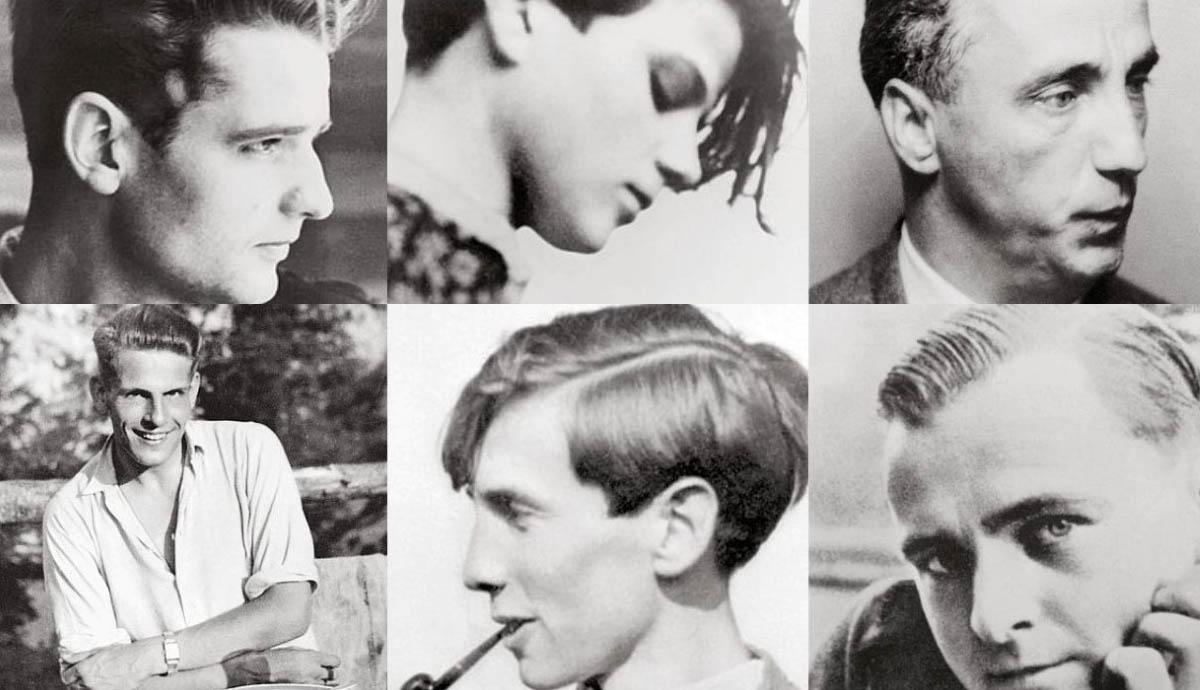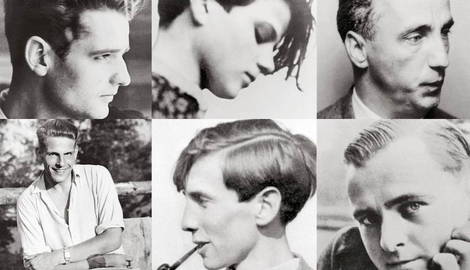
Once Germany invaded Poland on September 1, 1939, opposition against the Nazi regime started to rise. Resistance groups began to form in several countries once word got out about the horrifying crimes committed by Hitler and Nazi officials. The White Rose was a German youth resistance group formed in 1942 by a handful of students and one professor from the University of Munich.
How the White Rose Formed

The White Rose was initially formed as a group for like-minded students in relation to cultural matters. Once members of the group became aware of the atrocities committed against Jews under the Nazi regime, the White Rose called Germans to passively resist Hitler. The group began typing up leaflets and using a mimeograph to make duplicates and distribute them by mail around Munich.
The intentions of the pamphlets were to inform the German public and fellow university students of the wrongdoings committed by the Nazi Party and to urge resistance. Hans Scholl, the founder of the White Rose, used a typewriter to create the first four pamphlets with the help of a fellow classmate, Alexander Schmorell, during the summer of 1942.
By autumn of 1942, thousands of leaflets were distributed, reaching households across Germany. The last two leaflets created by the White Rose were distributed in January and February 1943. By this time, Nazi officials were aware of the anonymous resistance group and their flyers. Hans and fellow members of the White Rose were able to remain under the radar for quite some time despite the large amounts of paper and stamps they were using during strict rationing times.
Members of the White Rose

The White Rose was founded by Hans Scholl, a medical student at the university. Hans was originally involved in a Nazi youth movement but began to grow critical of the Nazi regime when he had to stand trial for homosexuality and for being a member of a banned youth group.
Fellow classmates Alexander Schmorell, Christoph Probst, and Willi Graf were also prominent members of the underground resistance group. Hans and his classmates had their studies interrupted in 1942 by being sent off to fight on the Eastern Front. After witnessing the terror inflicted on the Jews by Nazi officials, the group decided to continue their anonymous campaign against Hitler and his tyrannical form of government by creating more pamphlets upon their return to the university.
Sophie Scholl, Hans’ younger sister, began studying biology and philosophy in May 1942 at the University of Munich. Sophie saw the leaflets distributed by the White Rose around the university and praised them for their truths about Hitler. She soon found out that Hans was responsible for making the leaflets and began to help with distribution.
Kurt Huber was a well-liked philosophy and musicology professor at the University of Munich. He came into contact with the White Rose as Hans and Alexander were two of his students. Huber was very critical of the Nazi Party and helped write the sixth and final pamphlet that the White Rose would distribute.
Creation of the White Rose Pamphlets

There were a total of six pamphlets that the White Rose distributed around Munich and other German cities. Each pamphlet was created using a Remington typewriter that Alexander Schmorell borrowed from a friend. A mimeograph was used to duplicate the first four leaflets, and a different machine was used to duplicate the fifth and sixth pamphlets in larger quantities. The first four leaflets would have taken Hans and Schmorell quite some time to copy by hand, and the cost of the materials needed to make the leaflets was expensive.
First Leaflet
Hans Scholl and Alexander Schmorell created the first leaflet distributed by the White Rose. The leaflet concentrated on highlighting the systematic abuse of the Nazi government and hinted that more leaflets were to come. Hans and Alexander wanted German citizens to understand the destruction that Hitler was bringing upon their country and that if passive resistance action were not taken, the conditions would worsen.
Second Leaflet
The second leaflet created touched on the subject of the treatment of Jews. The White Rose explained that they did not want to compose an apology but instead open the eyes of German citizens to the dehumanizing crimes that Jews were facing. Within the leaflet, the White Rose bashed Hitler for his terrible German language in Mein Kampf and how Hitler intended to betray the people of Germany in order to rule over the country.
Third Leaflet

The White Rose composed the third leaflet to directly address the “dictatorship evil” their government was. It called out German peoples by asking how they could allow the National Socialists to rob them of their freedoms. This leaflet also included a statement about how Germans could go about opposing the Nazi Party through passive resistance. However, they did not outline exact steps that Germans could take as they could only make general suggestions.
Fourth Leaflet
The fourth leaflet contained a powerful message to the German people and stated that every word Hitler spoke was a lie. The promise of peace by Hitler meant war, and the White Rose deemed him as Satan. Every leaflet contained a short message typed at the bottom of each letter. Previous leaflets urged Germans to make copies of the leaflet and distribute them, but the fourth leaflet was slightly different.
The second to last line stated, “Wir schweigen nicht, wir sind Euer böses Gewissen, die Weiße Rose läßt Euch keine Ruhe!” which translates to, “We will not keep silent, we are your guilty conscience, the White Rose will not leave you in peace!”

This message was to show the German people that the White Rose resistance group was serious about taking action against Hitler’s regime, and their group was determined to be a constant reminder of his monstrous acts.
Fifth Leaflet
The second-to-last leaflet the White Rose sent out was drafted by Hans and written by Professor Huber. It addressed the nearing end of the war and stated that “a new war of liberation” was about to begin. Hans and Huber were correct in stating that the war was near the end as the fifth leaflet was published in January 1943. Nazi troops faced defeat in the Battle of Stalingrad just a month after the leaflet was released.
Sixth Leaflet
Although a draft of the seventh leaflet was being composed by the White Rose, the sixth leaflet was the last to be published and distributed. Professor Huber typed the final leaflet himself, and Sophie and Hans Scholl hastily scattered copies around university halls before classes let out. There was an abundance of copies left over, and Sophie decided to ascend to the top of the steps in the central hall and throw the leaflets in the air.

A custodial worker, Jakob Schmid, witnessed Sophie throwing the leaflets and immediately called for the Gestapo. The doors to the building were locked, preventing Hans and Sophie from escaping. The Gestapo apprehended the Scholl siblings, and the draft to the seventh leaflet was found in Hans’ bag. The Gestapo was able to find and arrest Christoph Probst within the same day.
White Rose Members Go On Trial

Hans, Sophie, and Christoph went on trial in the “People’s Court” (Volksgerichtshof). The People’s Court did not follow the same regulations as a just judicial system. People who stood before the court were often ridiculed and sentenced to death with little evidence held against them. The trial was led by the president of the court, Roland Freisler, and did not even last a full day.
Freisler sentenced Hans, Sophie, and Christoph to death on February 22, 1943. They were executed by guillotine just hours after the end of their trial. Alexander Schmorell, Kurt Huber, and Willi Graf were arrested in April 1943 and sentenced to death. Schmorell and Huber were executed in July, and Graf was executed later that year in October.
Commemoration of the White Rose

The White Rose resistance group was not immediately praised by fellow university students or German citizens following their execution. In fact, the resistance group was named traitors by the German press before the end of the war. However, foreign and German exile press attempted to raise awareness of the resistance group in hopes to continue the White Rose legacy during the remainder of the war.
The work of the White Rose began receiving national attention after their leaflets reached other countries, such as Norway, Sweden, Scandinavia, and Great Britain. Two months after the war ended, a commemoration was held in Munich for the White Rose. Numerous schools and streets in Germany were named after the group members. A memorial was placed outside the Ludwig-Maximilians-Universität in Munich, and a memorial lecture is held at the university annually.
There are several commemorative locations dedicated to the White Rose around Munich. An exhibit for the White Rose is located in the Munich Palace of Justice within the White Rose courtroom. Memorial plaques for Hans, Sophie, and Willi were placed where they lived before being arrested. Sophie, Hans, Christoph, and Alexander have memorial graves at the Perlacher Forst Cemetery. Kurt Huber’s memorial grave is located at the Munich Waldfriedhof Cemetery.
The members of the White Rose were highly determined and intelligent individuals. They sought to help their fellow students and German neighbors see the evil and corruption the National Socialist party brought upon Germany and other European countries. While many Germans hid in the shadows and turned their back on the countless deaths of Jews, the White Rose fearlessly defied Hitler and his malicious government by taking action and informing the public with their leaflets.










